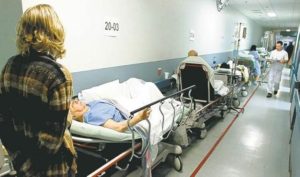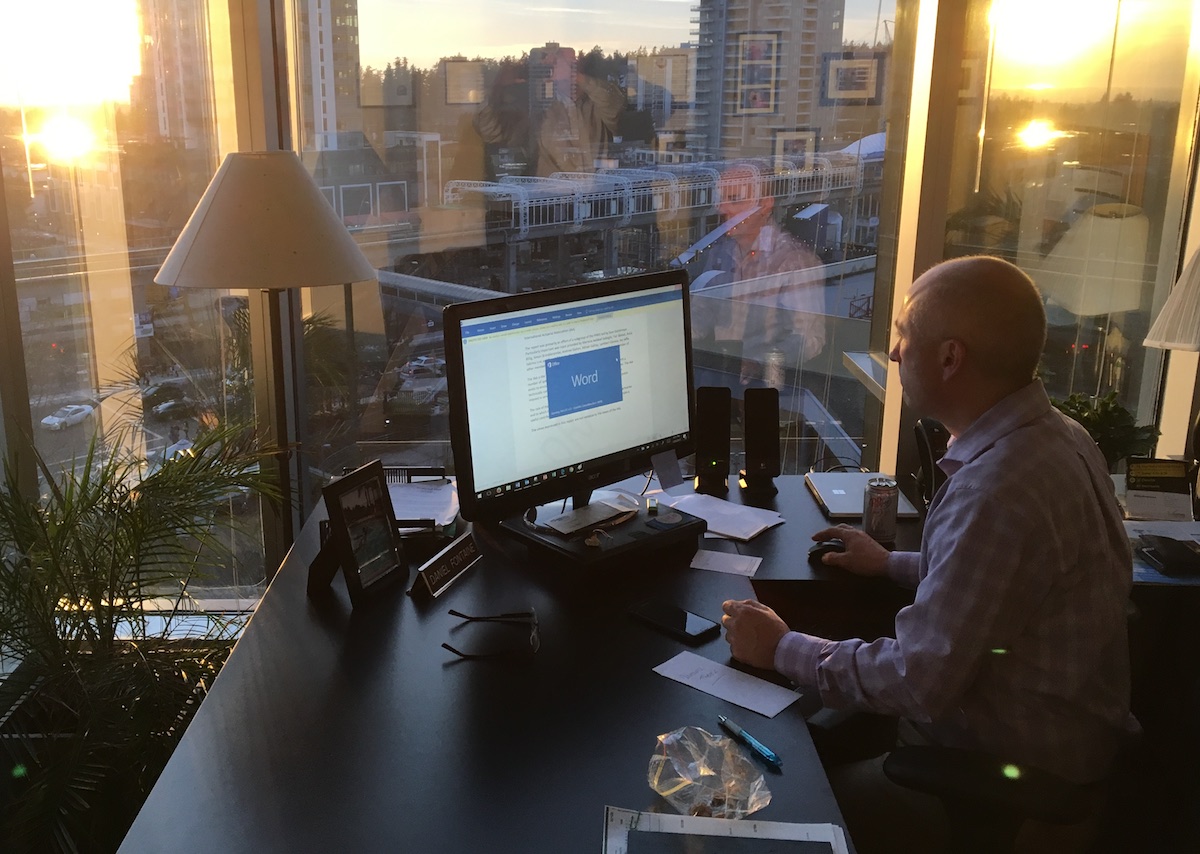By Daniel Fontaine
For the better part of three decades I’ve watched the same story about overcrowded emergency wards hit the headlines, often in the weeks just before an election. As with just about everyone else, I thought the answer lay in the creation of even more hospital beds. Pouring tens or hundreds of millions into our health care system has become so commonplace, and new approaches seemingly non-existent, who could argue with the logic that opening more hospital beds would solve everything?
Entering my fifth year as CEO for BC Care Providers Association (BCCPA), which represents the majority of non-government caregivers in our province, I have a fresh perspective on the problem of overcrowded emergency rooms, and a solution to address them.
By making the choice to shift resources into the community through home and residential care where it belongs, instead of funding more hospital beds, we can profoundly improve outcomes while saving millions.
This is something I am convinced the public already understands intuitively. If your elderly loved one needs non-emergent care, do you prefer that this care happens at home or a home-like setting, or in a hospital?
When BCCPA conducted a province-wide poll in 2015 of British Columbians and asked whether they were supportive of shifting resources out of local hospitals and into the community, three-in-five respondents answered ‘yes’.
This kind of strong public sentiment could explain why when the Fraser Health Authority announced they were closing 80 acute care beds, and transferring those resources into the community, there was zero uproar. None.
Seniors and their family members – the so-called ‘sandwich generation‘ taking on the responsibilities of a caregiver – know that the right place to expand investments is a home or residential setting, not a hospital.
No senior I know is eager to spend a night on a stretcher in a hallway at their local hospital. Everyone prefers a setting that can address their medical, as well as their spiritual and psycho-social needs.
There continues to be overwhelming pressure on B.C.’s Health Authorities to invest even more resources into hospitals, where, sadly, too many of our seniors are finding themselves.
Did you know that it costs up to $1,800 per day to run a hospital bed? It came as a shock to me when I learned this.
 What is incredible is that, for the same $1,800 investment, you can open up 9 long-term care beds in the community! These dollars would dramatically expand home care and home support where it is needed most.
What is incredible is that, for the same $1,800 investment, you can open up 9 long-term care beds in the community! These dollars would dramatically expand home care and home support where it is needed most.
When I explain to people that by shifting just one percent of hospital budgets in B.C. into home and community care, we could open 4,400 new long-term care beds, or that we could increase the capacity of home care by 12 million hours per year, they are astounded.
Putting it plainly, the time to plan for our aging population has come and gone.
There are now more British Columbians over the age of 65 than under the age of 15. Alzheimer’s Disease is impacting countless numbers of seniors and their caregivers – many of whom have had to leave the workforce while struggling to balance the needs of their aging parents and kids.
By shifting those 80 beds from acute (hospital) care into the community, the Fraser Health Authority (FHA) deserves the public’s support, and certainly should not be facing accusations of mismanaging resources. FHA’s leadership team are showing they are prepared to do what few others have dared to do, and tackle the issue of our aging population head on.
Challenging the status quo, particularly in something so large as our public health care sector, is no mean feat.
 Incredibly, at least thirteen percent of all hospital beds across the province – one out of every eight – are currently occupied by someone who should be receiving an alternate level of care in the community.
Incredibly, at least thirteen percent of all hospital beds across the province – one out of every eight – are currently occupied by someone who should be receiving an alternate level of care in the community.
Seniors who are occupying these acute care hospital beds costing up to $1,800 per day, could be receiving more appropriate care in the community for $200 or less.
Let that sink in for a moment, and put it in the context of those who are calling to funnel more money into our emergency rooms as a means of dealing with this “crisis”.
The statistics support what could not be clearer or indisputable. Shifting resources into the community is the way to address the issue of crowded hospital emergency rooms.
Lower the demand pressures on emergency rooms, and you reduce the need for costly hospital beds.
Armed with the facts, I remain hopeful that B.C.’s Health Authorities will adopt a solution that will both reduce pressure on our hospitals, and increase the availability of care for B.C. seniors.
***
For more information, read BCCPA’s Made-in-BC Roadmap to Improve Seniors Care.





